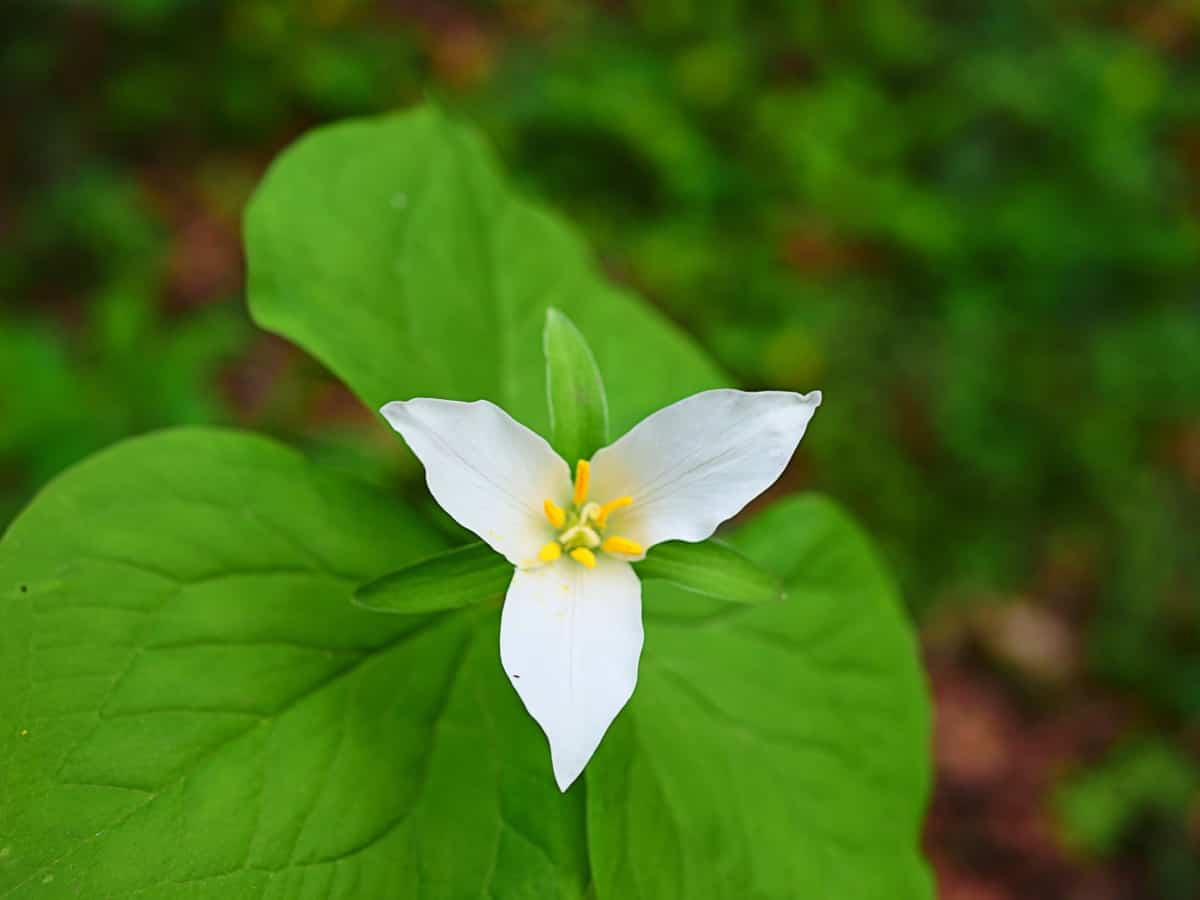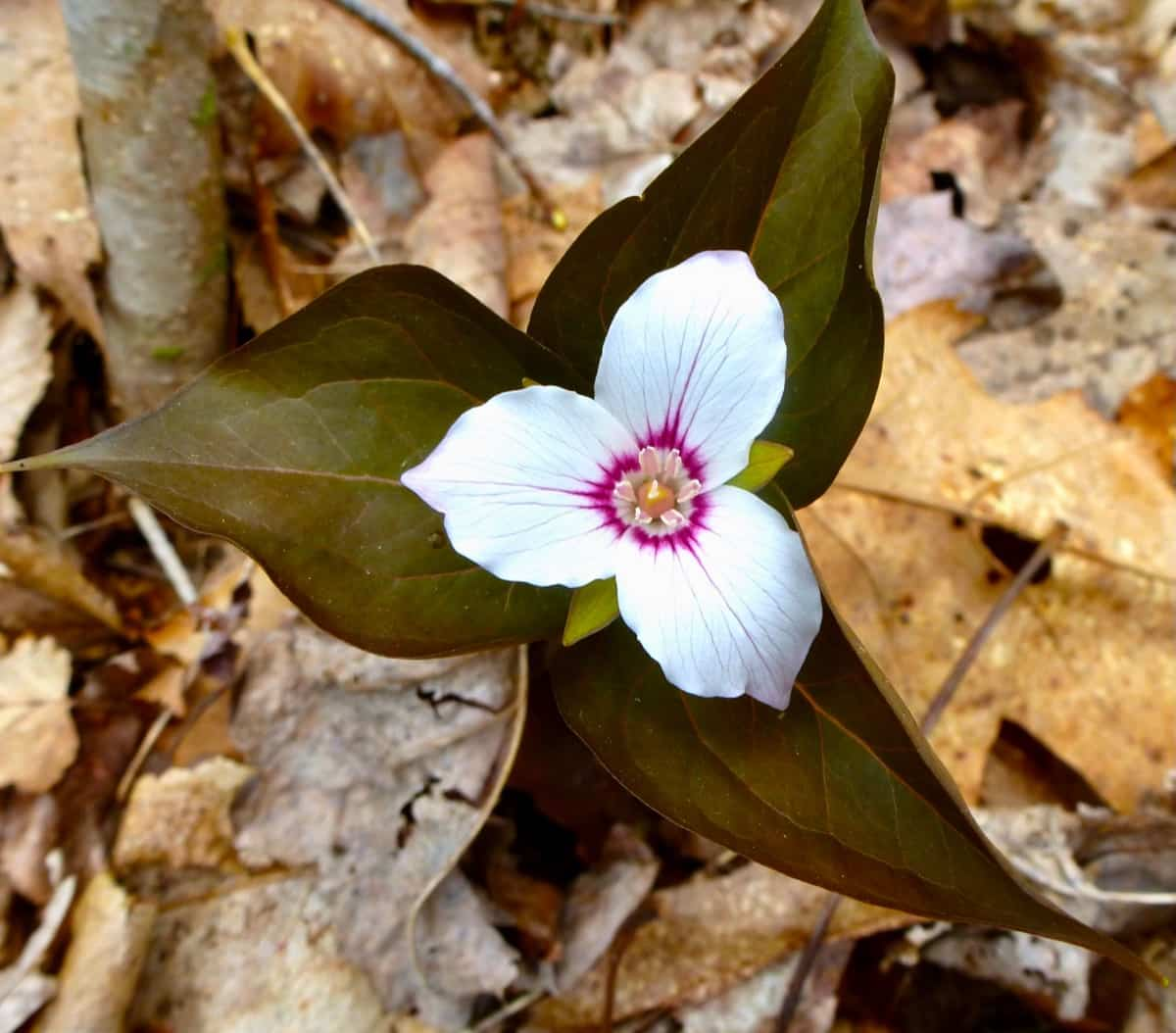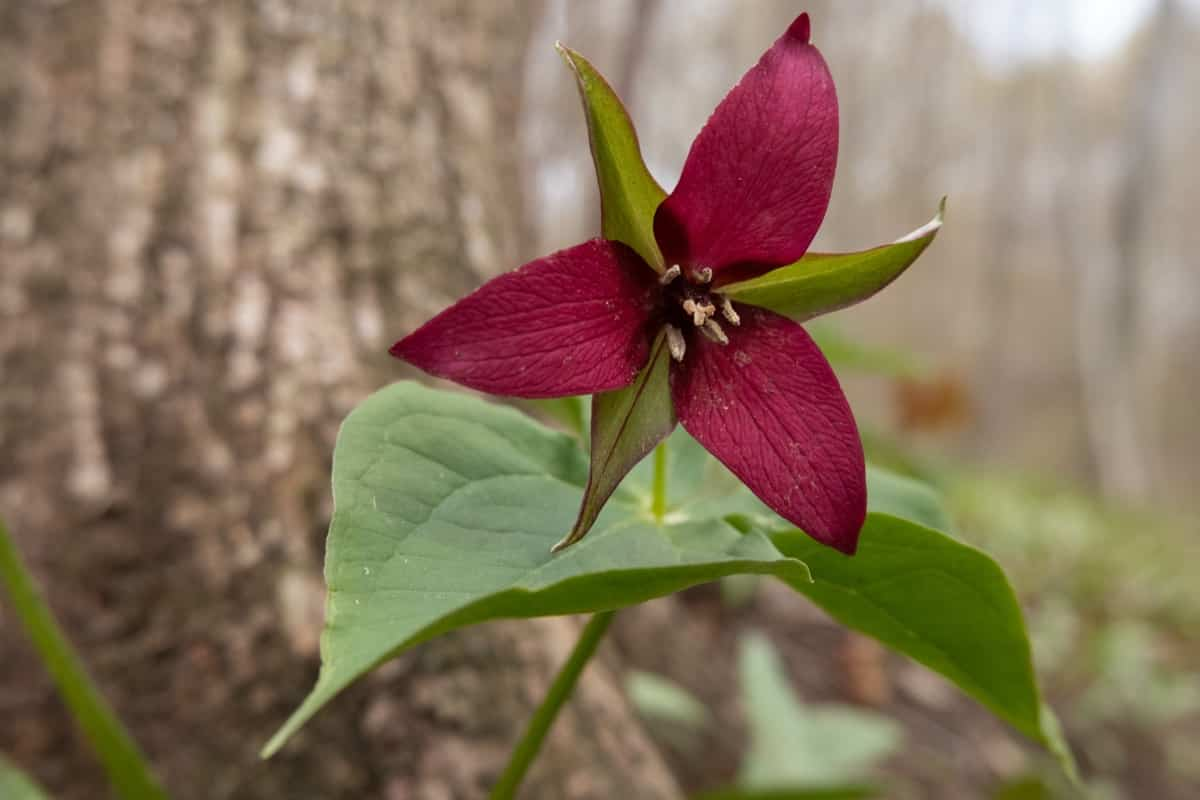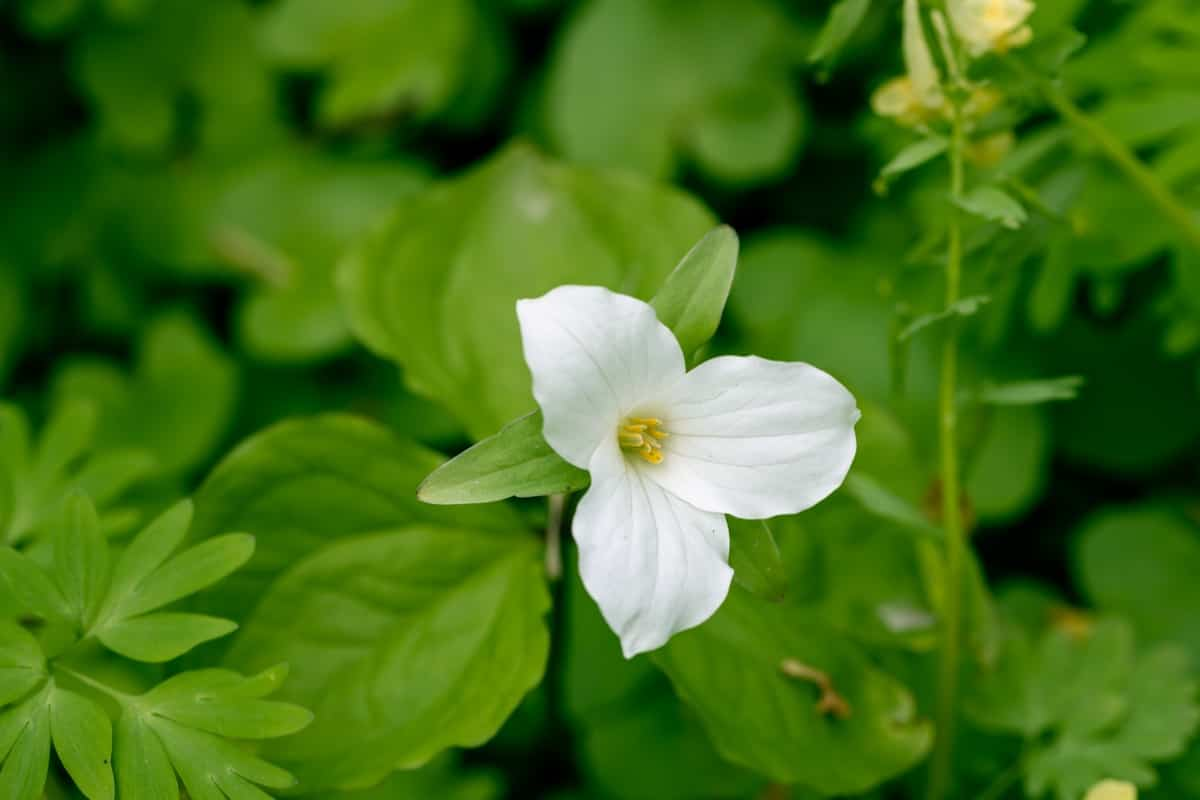Growing and caring for Trillium flowers can be a rewarding experience for any gardener. These unique and delicate blooms add beauty and intrigue to any garden or natural landscape.
When choosing the right location for Trilliums, consider their specific sunlight and soil requirements. Planting them properly and providing adequate water will help ensure their healthy growth.

While pests and diseases may pose some challenges, being vigilant with preventative measures can minimize these issues. And if you’re lucky enough to have a mature Trillium plant that produces flowers, don’t hesitate to harvest them for use in floral arrangements or as an enchanting addition to your indoor decor.
How to Grow Trillium Flowers
Introduction to Trillium Flowers: Understanding the Basics
Trillium flowers are fascinating and unique plants that add beauty to any garden. One of the most distinctive features of Trillium flowers is their three-petaled blossoms that come in various colors, including white, pink, red, yellow, and even purple. The petals surround a central pistil that gives the plant its characteristic appearance.
Trilliums are shade-loving plants and thrive in moist areas with well-drained soil. They make excellent additions to shady gardens or naturalized areas where they can create a serene and peaceful atmosphere. When successfully growing Trillium flowers, choosing the right species for your specific climate and growing conditions is essential. Several types of Trilliums are available, each with unique requirements and characteristics.
Choosing the Right Trillium Species for Your Garden
Choosing the right Trillium species for your garden is exciting and important. One popular Trillium species is Trillium grandiflorum, the white Trillium. This elegant flower features large white petals contrasting beautifully against its dark green leaves. It thrives in shady woodland areas and is a favorite among gardeners looking to add a touch of elegance to their landscape.
In case you missed it: 15 Gardening Mistakes to Avoid This Fall: For Vegetables, Flowers, Fruits, aTrillium

If you prefer something more vibrant, consider Trillium luteum, the yellow Trillium. This stunning flower boasts bright yellow petals and prefers partial shade or dappled sunlight. Trillium sessile may be the perfect choice for those who enjoy unique blooms. This species showcases maroon-red flowers with three distinct sepals that resemble wings. It does well in moist soil and shaded areas.
Selecting the Ideal Location for Growing Trillium Flowers
When growing Trillium flowers, selecting the right location is crucial for their success. These delicate plants thrive in specific conditions, so finding an ideal spot is essential. First and foremost, consider the amount of sunlight your chosen location receives. Trilliums prefer partial shade or filtered light, as direct sunlight can be too harsh. Look for areas under tall trees or near shrubs that provide shade during the hottest parts of the day. Additionally, Trilliums appreciate a slightly acidic soil pH ranging from 5.5 to 6.5.
Preparing the Soil for Trillium Planting
Preparing the soil for planting Trillium flowers ensures their growth and success. Trilliums prefer well-drained, rich, and slightly acidic soil. Before planting, assessing your soil’s condition and making any necessary amendments is important. Start by clearing the area of any weeds that may hinder the growth of your Trilliums.
Trilliums thrive in slightly acidic conditions with a pH between 5.5 and 6.5. Add organic matter to lower the pH if your soil is too alkaline. Spread compost or well-rotted manure over the area where you plan to plant your Trilliums, then mix it into the top few inches of soil.
Propagation Methods for Trillium Flowers
From Seed
Trilliums are beautiful flowers that can be propagated through various methods. One of the most common and effective ways to propagate Trilliums is using seeds. To begin with, collect mature Trillium seeds from healthy and well-established plants. Harvest the Trillium seeds when fully ripened but before they naturally disperse.
In case you missed it: 14 Best Spring-flowering Bulbs to Grow in Your Garden

Next, prepare a propagation tray or small pots filled with a well-draining soil mixture. Sow the Trillium seeds on top of the soil surface without burying them too deep. The ideal depth for planting Trillium seeds is around 1/4 inch. After sowing the seeds, lightly mist the soil surface with water to ensure proper moisture levels. Place a clear plastic cover over the tray or pots to create a greenhouse-like environment that will help retain humidity.
Trillium seed germination can be slow and unpredictable, often taking several months. Monitor your trays or pots and maintain consistent moisture levels throughout this period. Once germination occurs and tiny seedlings emerge, gradually acclimate them to outdoor conditions by removing the plastic cover for short periods each day. Eventually, transplant these young Trilliums into individual pots or directly into prepared garden beds.
Dividing and Transplanting Trillium Plants
Dividing and transplanting Trillium plants is necessary to ensure their continued health and vitality. While Trilliums are known for being slow-growing, there may come a time when they outgrow their current location or need to be divided for propagation purposes. To begin the process, choose a cool, cloudy day in early spring or late autumn when the plant is dormant. Carefully dig around the base of the Trillium clump, not damaging the delicate roots. Gently lift the clump from the ground and shake off any excess soil.
Next, divide the clump into smaller sections using a sharp knife or garden shears. Each section should have at least one healthy rhizome attached. Be mindful not to cut too close to the growing tip, which can impede future growth. Once divided, prepare a new planting area by amending well-draining soil with organic matter such as compost or leaf mold. Dig holes deep enough to accommodate each section without crowding its roots.
Carefully place each division into its designated hole, ensuring it sits at about the same depth as it was planted. Fill in any gaps with additional soil mixture and gently firm it around each plant. Water thoroughly after transplanting to settle the soil and provide much-needed moisture for root establishment. Monitor watering throughout the first growing season, ensuring plants receive adequate hydration but stay waterlogged. Remember that divided Trilliums may take some time to establish themselves in their new location.
Watering and Moisture Requirements for Trillium Flowers
Trillium flowers have specific watering and moisture requirements that must be carefully considered for successful growth. These plants prefer moist, well-draining soil, so it’s crucial not to overwater them. Overly soggy soil can cause root rot and other problems. When it comes to watering Trillium flowers, the key is moderation. They thrive in consistent moisture levels but don’t like standing water. It’s best to water deeply once weekly during dry periods rather than lightly every day.
In case you missed it: The Best Plants for USDA Zone 9: Top Trees, Flowering, Perennial, Drought-Tolerant, and Container Plants

This allows the roots to absorb enough moisture without becoming waterlogged. In addition to regular watering, adequate humidity is essential for Trilliums’ overall health and vitality. To increase humidity levels around these plants, consider using a humidifier indoors or misting them with water outdoors during hot and dry weather. Remember that each Trillium species may have slightly different moisture requirements due to its natural habitat preferences.
Providing Adequate Sunlight for Trillium Plants
Trillium flowers are unique and delicate, requiring just the right amount of sunlight to thrive in your garden. Trilliums prefer dappled shade or partial sun when it comes to sun exposure. To ensure that your Trillium plantsTrillium adequate sunlight, choose a location that offers filtered light or morning sun with afternoon shade.
This could be under the canopy of trees or near taller shrubs that provide shade during the hottest part of the day. When growing trillium in pots, consider placing them where they will receive less sunlight. You can even move them around throughout the day to find the perfect balance between light and shade.
Fertilizing Trillium Flowers: Dos and Don’ts
Trilliums prefer a low-nutrient soil, so opt for a balanced fertilizer. Slow-release formulas are ideal as they deliver nutrients gradually over time. Trilliums are sensitive to excessive nutrients, leading to poor growth or damaging their root systems. While nitrogen is essential for plant growth, the excess can cause Trillium flowers to become leggy or produce fewer blooms.
Avoid using high-nitrogen fertilizers that promote leafy growth at the expense of flowering. Trillium plants go dormant during summer, so refrain from fertilizing after springtime when actively growing. Fertilizer applications during dormancy can disrupt their natural cycles and potentially harm the plants.
Mulching Techniques to Protect Trillium Plants
Mulching is essential for protecting Trillium plants and ensuring their optimal growth. By applying a layer of organic material around the base of the plants, you can provide them with numerous benefits. Mulch retains moisture in the soil, preventing it from drying out quickly during hot weather or drought. This is particularly important for Trilliums as they prefer moist, well-drained soil. Furthermore, mulch acts as a natural barrier against weeds.
Suppressing weed growth and competition for nutrients allows Trilliums to thrive without competing with unwanted vegetation. Additionally, mulch is an insulating layer that helps regulate soil temperature throughout the year. To apply mulch properly, ensure you have cleared any weeds or debris around your Trillium plants. Then, spread a layer of organic material about 2-3 inches thick around each plant’s base while ensuring not to cover its crown directly.
Controlling Weeds and Pests in Trillium Gardens
To control weeds effectively, start by regularly inspecting your garden for any signs of weed growth. Once you spot them, it’s important to remove them promptly before they have a chance to spread. Manual removal is often the best approach for Trillium gardens since chemical herbicides may harm these delicate plants.
In case you missed it: Sweet Dreams with 15 Most Fragrant Flowers to Grow in the Bedroom

Mulching is another effective technique that helps suppress weed growth while retaining soil moisture. Apply organic mulch around your Trillium plants, ensuring they do not cover the foliage directly, as this could lead to rotting. Look for common culprits like slugs and snails attracted to Trilliums’ tender leaves.
You can deter these slimy creatures by placing copper tape or eggshells around your plants, as they dislike crossing over these rough surfaces. If aphids or other sucking insects become an issue, consider using natural predators such as ladybugs or lacewings to help control their population. Introducing beneficial insects into your garden is eco-friendly and ensures long-term pest management without harming beneficial pollinators.
Regularly monitoring your Trillium garden for signs of stress or damage caused by pests will allow you to take immediate action if needed. By staying vigilant and employing preventive measures early on, you can maintain a healthy environment where Trilliums and beneficial wildlife thrive harmoniously.
Pruning and Deadheading Trillium Flowers
Deadheading involves removing the faded or spent flowers from the plant. This keeps your Trillium garden neat and promotes new growth and blooming. To deadhead Trilliums, simply snip off the wilted flower stalk at its base using clean pruners or scissors. Be sure to cut just above where the stem meets the foliage to avoid damaging any emerging buds.
As for pruning, Trilliums generally only require a little pruning beyond occasional tidying up. However, if you notice any damaged or diseased leaves or stems, it’s best to remove them promptly to prevent further spread of disease.
Overwintering Trillium Flowers: Tips and Tricks
As temperatures drop and winter approaches, protecting your Trillium flowers is important. These delicate plants may need extra care during the colder months to thrive come springtime. Ensure your Trillium plants have enough time to establish themselves before winter arrives. It’s best to plant them in early fall or late summer so they can develop strong roots. Once winter sets in, provide a protective layer of mulch around the base of each Trillium plant.
This will insulate the soil and prevent extreme temperature fluctuations that can damage the roots. Consider covering your Trilliums with a burlap or frost cloth in areas with harsh winters. This additional barrier can shield them from freezing winds and heavy snowfall. Remember not to water your Trilliums excessively during winter, which can lead to root rot. Instead, rely on natural rainfall or occasional watering when the soil feels dry.
Troubleshooting Common Issues in Growing Trillium Flowers
Trillium flowers are generally hardy and low-maintenance plants. However, like any other plant, they can face some common issues that may hinder their growth and blooming. One common issue faced by Trillium growers is poor or uneven germination. This can be caused by improper planting depth or inadequate soil moisture. To overcome this problem, plant the Trillium bulbs at the correct depth and maintain consistent moisture levels during germination.
Another issue that gardeners may encounter is fungal infections, particularly powdery mildew or leaf spot disease. These diseases can cause unsightly blemishes on the foliage of Trillium plants. To prevent fungal infections, adequate air circulation around your plants is important by spacing them apart and avoiding overhead watering. In some cases, Trilliums may fail to bloom altogether.
In case you missed it: Blooming Bounty: Best Annual Fall Flowers to Plant for Pollinators

This could be due to a few reasons, such as insufficient sunlight exposure or overcrowding. If your Trilliums aren’t flowering as expected, consider relocating them to a sunnier spot in your garden or thinning out crowded areas, so they have enough space to grow. Additionally, pests like slugs and snails can threaten your beloved Trillium flowers. To combat this problem organically, use natural deterrents such as crushed eggshells or diatomaceous earth around your plants’ base.
Conclusion
Growing and caring for Trillium flowers can be a rewarding experience for any garden enthusiast. These beautiful plants add beauty to your outdoor space and offer various benefits, such as attracting pollinators and promoting biodiversity. These enchanting blooms are sure to captivate anyone who sets eyes upon them.
- Gardening Techniques in Planting Vegetables
- Where to Place Indoor Plants in Your Home
- How to Grow Tomatoes Organically at Home: A Comprehensive Guide
- Organic Gardening on a Budget: Low-Cost Methods and Materials
- Gongura Seed Germination and Planting Methods
- Cabbage Seed Germination and Selection
- Broccoli Seed Germination and Selection
- Asparagus Seed Germination and Variety Selection
- Seasonal Flower Gardening: Best Practices for Spring, Summer, Fall, and Winter
- How to Grow Hibiscus from Flower
- Plantation Ideas for Home Decoration: A Beginners Guide
- Flower Garden Designs and Layouts for Beginners
- Planting and Spacing Techniques in Papaya: A Beginner’s Guide
- Growing Gold: Essential Techniques for Planting Pineapples
- How to Make Kalanchoe Plant Bushy: Home Remedies and Solutions
- 11 Reasons Why Your Gardenia is Not Blooming: Home Remedies and Solutions
- Eco Elegance: The Guide to Designing a Drought-Tolerant Landscape
- Gardening on a Slope: Strategies for Hillside Landscaping
- Nourish and Flourish: Top Organic Mulches for Thriving House Plants
- Everything You Want to Know about Indian Mogra Flower: Discover Uses and Growing
- Green Thumb Success: Expert Tips for Cultivating Greenhouse Pumpkins All Year Round
- Maximize Growth & Flavor: The Ultimate Guide to Companion Planting in Herb Gardens
- How to Control Rhododendron Problems Naturally: Home Remedies and Organic Ways to Fix Them
- Natural Magic: The Remarkable Benefits of Cinnamon for Plants
- Best Steps to Revive Dying Tulip with Natural and Organic Treatment
- 10 Reasons Why Your Angel Trumpet is Not Blooming: Remedies and Treatment
- How to Fix Periwinkle Leaf and Flower-Related Problems: Natural Remedies and Solutions
- How to Fix Zinnias Leaf and Flower Problems: Discover Natural and Home Remedies
- Organic Steps to Induce Lemon Tree Flowers: A Comprehensive Guide
- Bloom Booster: Crafting the Perfect Homemade Bougainvillea Fertilizer
- Optimizing Growth: A Guide to Applying NPK Fertilizer for Potted Plants
- 10 Best Homemade Fertilizers for Rubber Plant: DIY Recipes and Application Method
- How to Boost Female Pumpkin Flowers: Effective Steps for More Flowers and High Yields
- Transform Your Indoor Garden: Top Benefits of Pink Salt for Houseplants
- 10 Best Homemade Fertilizers for Peacock Plants (Calathea): Easy DIY Guide
- Unlock Blooms: 9 Reasons Why Your Potted Chrysanthemum is Not Blooming